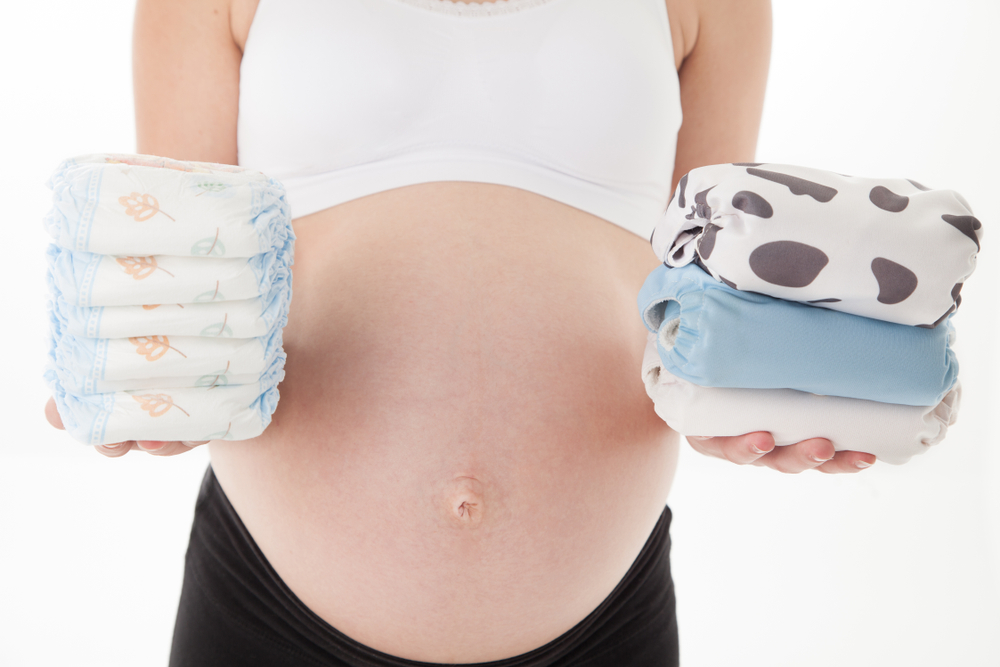It’s a recurring question, what are the best nappies for baby? We’ve taken a closer look at the differences between cloth and disposable nappies to see what the pros and cons are, and also to see what seems best to assist when baby has nappy rash.
There’s a lot to take into account when making the right choice – the fit, absorbency, comfort for your baby and of course how easily can your baby get around in the nappy you choose.

So what’s so good about cloth?
Cloth nappies have progressed over the years to share many of the convenient features of disposable nappies: Velcro tabs, fitted designs for comfort, even waterproof bands around the waist and legs to prevent leaks are a welcome innovation to this kind of nappy.
In terms of types of cloth nappies, there is also a variety of shapes including pocket nappies which have a leak proof outer shell, with an internal ‘pocket’ to capture the moisture; fitted nappies also known as shaped nappies (these are the ones that fasten with Velcro) and then there are all-in-ones or all-in-twos which have a leak proof shell, in-built absorbent layers and are faster drying after washing as they can be taken apart. Clearly cloth has come a long way!
Using cloth nappies can also provide a positive solution in reducing waste created by disposable nappies. Sustainability Victoria estimates a total of 3.75 million nappies are disposed of in Australia and New Zealand every day.
Additionally, some cloth nappies can be a great option for allowing baby’s bottom to breathe – breathable cloth nappies (depending on the material type) can allow more air through, assisting with resolving nappy rash along with the addition of a cream like Sudocrem.
And the cons?
Lots of washing! There are still concerns that using cloth nappies impacts the environment from the use of water and detergents required to wash them.
Fit and size can also be something to consider as they can vary and sizes are not always quite as flexible as disposable.
Furthermore, the initial upfront costs of cloth nappies can seem quite expensive to begin with, especially when opting for ones with built in liners.
Additionally, time becomes a bigger factor with cloth nappies – parents are generally always stretched for time, therefore the extra allowance needed for washing and drying nappies can certainly make the disposable choice more attractive.
Now let’s take a look at disposable – what are the pros for this nappy choice?
When it comes to treating nappy rash, the disposable nappy takes the win as generally cloth nappies aren’t as strong of a contender for high absorbency.
Due to how they’re made, disposable nappies help to draw moisture away from baby’s skin. Some paediatric dermatologists believe the science behind the disposable nappy has come a long way in helping to care for the condition of the skin. In addition, using nappy rash lotions or creams such as Sudocrem, plus changing nappies regularly enough, can assist in reducing nappy rash and discomfort.
Because of the environmental considerations, there are now many brands of nappies which are created to be biodegradable (made from paper pulp and bamboo), using non-chemical materials to assist with absorption.
A huge pro is of course the convenience. Disposable nappies are handy when you are out and about because if you run out, you can usually fairly easily find some more! Also, disposable nappies are designed to be thrown away when soiled – no need to cart stinky nappies home for washing.
But of course there are also some cons to consider…
The longer term cost for disposable nappies is something to consider knowing that you could spend literally thousands of dollars on these items which get used once and thrown in the bin. Given it is predicted most bubs go through over 6,000 disposable nappies, that’s something to think about!
The environment is the other big consideration – billions of traditional disposable nappies go to landfill in Australia every year, with some taking hundreds of years to break down, it’s worth considering biodegradable options if possible.
Really, what you choose is what best suits you, your lifestyle and most of all your baby. Finding the right nappy for your little one can be as simple as trialing either option to find what your baby is happiest and most comfortable in. Ultimately, the best outcome really is up to the individual and how your baby reacts to the options. When choosing cloth or disposable, perhaps it is a mix of both – go for what works best for you and your baby to support schedules, nappy rash issues, convenience, and the environment.

